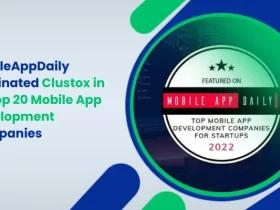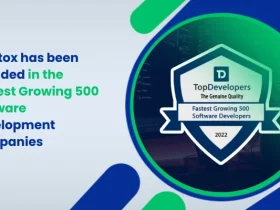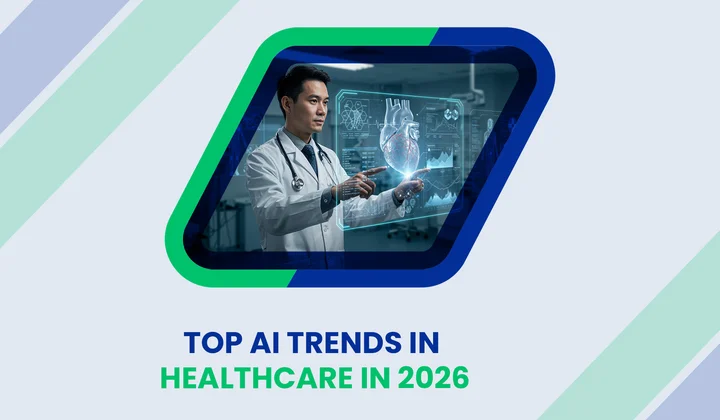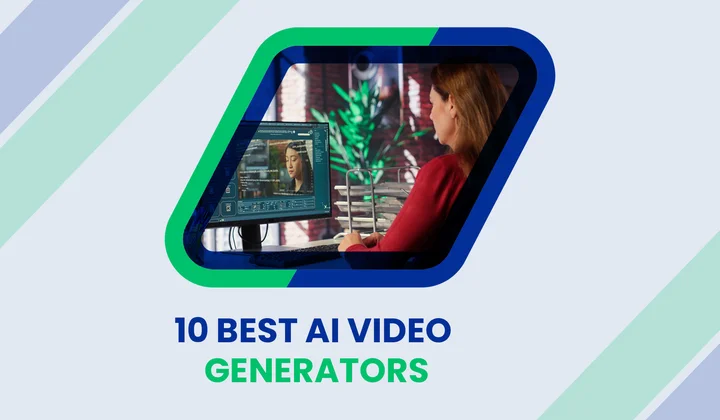Who would’ve thought that the same stethoscope doctors have carried for centuries, the one most of us remember from childhood checkups, would be reimagined with AI today?
Yet here we are. Many present-day breakthroughs that once felt like science fiction are now shaping the reality of modern healthcare.
Over 4.5 billion people globally still lack access to essential healthcare facilities, according to the World Health Organization (WHO).
That’s precisely why seeing AI technologies in healthtech evolve at this pace makes perfect sense.
Organizations that have embraced AI-powered healthcare innovation are already setting new standards. In a field this competitive, integrating AI into healthcare solutions has become a matter of survival.
So what AI trends are shaping healthtech in 2026?
This blog takes you through the latest healthcare technology trends and real-world applications redefining patient care in 2026 and beyond.
Let’s dive right into it!
Table of Contents

1. AI-Powered Diagnosis & Medical Imaging
Computer vision is changing the way doctors see and treat patients. By learning from X-rays, MRIs, CT scans, lab results (and even doctors’ notes), machine learning in healthcare flags risks, prioritizes urgent cases, and suggests next steps. The goal is simple:
- Quicker insights
- Fewer misses
- More consistent care
Behind the scenes, many AI-assisted diagnostic tools are doing the heavy lifting. They catch tiny details that humans might overlook, spot patterns across thousands of scans, and even help plan precise treatment approaches.
Real-World Applications
- AI stethoscopes developed by researchers at Imperial College London can detect three heart conditions in just 15 seconds and heartbeats that the human ear can’t even hear.
- A study published in Nature Medicine found that using AI for breast cancer screening identified one additional case per 1,000 women.
2. Predictive Analytics In Healthcare
Hospitals used to wait until problems showed up. Now they’re getting alerts before the alarm bells ring. Predictive analytics uses big data and AI to analyze past and real-time patient data. It sorts through years of EHRs, lab results, and wearable insights and says, “Heads up, this patient might flare up next week.”
You can see how enormous the benefits of predictive analytics in healthcare are.
Patient care has shifted from reactive to proactive. Readmissions are down, costs have dropped, and outcomes are finally meeting expectations.
Real-World Applications
A recent study published in JMIR reported an ML-based readmission prediction model that flags high-risk patients early and is used by a hospital in Seoul. The results were hard to ignore:
- Fewer unplanned readmissions
- Early intervention for high-risk patients
- Better discharge planning and patient outcomes
- Evidence-based clinical decisions using nursing data
3. Virtual Hospitals & Remote AI Care
In 2026, telemedicine (one of the biggest AI trends in healthcare) is evolving into something far more advanced. We are talking about virtual hospitals.
Instead of physical hospitals, there are fully digital rooms driven by innovative healthtech tools that manage virtual wards, handle triage questions, and monitor patients right from their homes.
Remember, we mentioned earlier that more than half of the global population still doesn’t have access to healthcare?
That’s why accessibility and efficiency matter so much right now. In remote areas or overstretched health systems, AI-powered healthcare means care happens where the patient is, not where the hospital is.
Real-World Applications
SEHA Virtual Hospital is recognized by Guinness World Records as the largest virtual hospital in Saudi Arabia. This telehealth platform:
- Treats over 400,000 patients annually
- Connects 230+ hospitals across Saudi Arabia
- Provides 24/7 remote monitoring and specialized digital clinics
4. Wearables & Edge AI for Real-Time Health Tracking
Your wearable devices are also getting an upgrade. With these AI-enabled gadgets, often called Wearable AI, you can do more than just collect health data.
Along with gathering data, they detect patterns, predict health anomalies before they happen, and alert you or your clinician in real time.
Don’t want to rely on the cloud? No problem.
Edge AI processes health data directly on the device, giving faster responses, stronger data privacy, and uninterrupted monitoring even without internet access.
Real-World Applications
Researchers at SANKEN, the University of Osaka, have developed the world’s first and most accurate self-evolving edge AI technology. This innovation, called MicroAdapt, brings real-time learning and prediction to medical wearables and IoMT sensors.
In addition to it being fast and lightweight, below are some of its key highlights:
- Processes information up to 100,000x faster
- 60% more accurate than typical deep learning models
- Opens doors for real-time patient insights
29% of healthcare professionals are already using AI to make faster, more accurate decisions. Are you?
5. Generative AI in Drug Discovery & Research
We’ve all gotten our hands on Generative AI in one way or another. As of 2025, over 378.8 million people are actively using AI tools.
For a while, people assumed GenAI was just meant for writing content or automating marketing campaigns. But that bubble’s long burst.
Companies worldwide are now exploring their role in core operations from predictive analysis to intelligent automation.
The healthcare sector is no different. Generative AI in healthcare:
- Shortens R&D timelines using big data analytics.
- Supports data-driven medicine and smarter AI healthcare solutions.
- Helps scientists simulate molecules and predict compound behavior.
- Powers precision medicine AI solutions to identify targeted treatments.
Real-World Applications
Recently, MIT researchers designed novel antibiotics using GenAI that can kill drug-resistant bacteria like MRSA and gonorrhea. Their AI models created and screened over 36 million compounds, something human labs couldn’t have achieved in years.
6. AI Agents Automating Healthcare Systems
Agentic AI. Autonomous AI. AI Agents. You may have heard these buzzwords in 2025.
McKinsey’s The State of AI in 2025 report shows that 62% of organizations are already experimenting with them.
But in healthcare, the need runs deeper. With constant staffing shortages and rising administrative pressure, agentic healthcare intelligence is fast becoming essential.
Here’s how AI agents are transforming real-world operations:
- Use NLP in healthcare to auto-summarize clinical records.
- Enable virtual care and AI-based patient monitoring.
- Strengthen clinical decision support systems.
- Integrate cloud-based AI healthtech.
- Automate administrative tasks.
Real-World Applications
At TU Dresden, researchers built an autonomous AI agent for precision oncology that works like a digital co-pilot for doctors. It analyzes scans, predicts mutations, and pulls insights from medical guidelines within seconds.
When tested on real cancer cases, it achieved 91% diagnostic accuracy, helping oncologists make faster, evidence-based decisions without losing clinical control.
7. Robotics in Surgery & Patient Care
What started with the da Vinci system has evolved into companion robots supporting elderly care; robots in healthcare have come a long way.
And, no, this isn’t going to stop here.
In 2026, you’ll see artificial intelligence robots using intelligent healthtechnology powered by automation and real-time data insights to improve patient outcomes.
These robots not only speed up and improve the precision of operations but also help fill critical gaps caused by the ongoing health workforce shortage.
Real-World Applications
In the U.S., Diligent Robotics’ Moxi, an AI-powered hospital robot, is fixing one of healthcare’s most significant pain points: the overworked staff. This medical robot:
- Traverses halls, doors, and elevators with smart sensors.
- Delivers meds and supplies across departments.
- Minimizes nurses’ workload by up to 40%.
8. AI-Assisted Genome Editing
Earlier, scientists had to cut and splice carefully, hoping for the best. Then came CRISPR, making edits faster, more precise, and far more versatile. But even with CRISPR, predicting the ripple effects of each change is tricky.
With AI, genetic modification becomes smarter, predicting outcomes and guiding safer, more precise edits. It’s like a GPS for genome editing, guiding each cut and splice to make safer, more accurate changes.
Real-World Applications
CRISPR-GPT is an AI-powered assistant developed by Stanford Medicine to support researchers in planning and executing gene-editing experiments.
- Guides researchers strategically through experiment design.
- Predicts off-target effects to improve precision and safety.
- Facilitates collaboration by sharing insights across labs.
Even beginners with no prior gene-editing experience can use it. A student in Cong’s lab turned off several genes in lung cancer cells on the first try, a task that usually takes weeks of trial and error!
Frequently Asked Questions (FAQs)
2. What Should Be Considered When Building AI-Ready Healthcare Software For Modern Hospitals?
AI-ready software must prioritize secure data handling, federated learning, healthcare data privacy, and adherence to AI governance and regulatory requirements (e.g., HIPAA, GDPR). Flexible design, real-time analytics, and support for clinical decision support systems (CDSS) with AI ensure the software scales and remains effective as new healthcare trends emerge.
3. How Does AI Facilitate Collaboration Across Different Healthcare Systems?
AI helps to improve interoperability and connectivity in healthtech by unifying data from EHRs, medical imaging, and wearable devices. By harmonizing these systems, hospitals can gain actionable insights across departments while utilizing cloud-native healthtech platforms for smoother operations.
Final Takeaway
Healthcare is evolving faster than anyone imagined. AI is diagnosing diseases before symptoms appear, wearables are turning daily habits into health insights, and robotics are redefining precision in care. It’s a future that feels both exciting and overwhelming.
But how do you keep up when innovation never slows down?
It starts with practical steps that help your organization stay ahead:
- Create systems that can quickly adjust to emerging trends in AI.
- Use data to guide smarter decisions and improve patient outcomes.
- Apply healthcare software development expertise to create reliable workflows.
- Stay compliant while exploring new artificial intelligence applications in healthcare.
Now that you know which trends are shaping healthcare in 2026, it’s time to see how these innovations can genuinely make a difference in your organization.
Learned the trends. Need a roadmap? We’ve helped startups and enterprises amp up operational efficiency by up to 40% with AI-powered software & workflow solutions.








Share your thoughts about this blog!